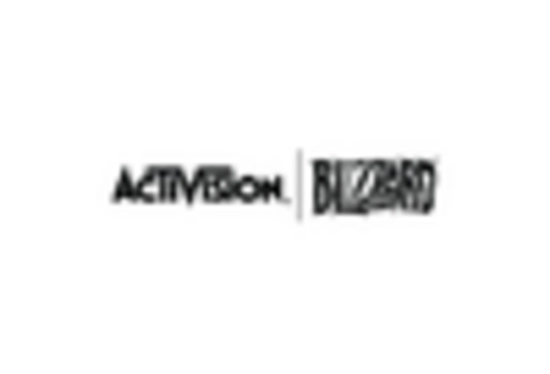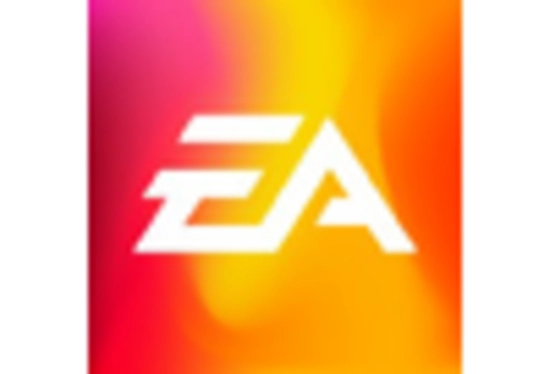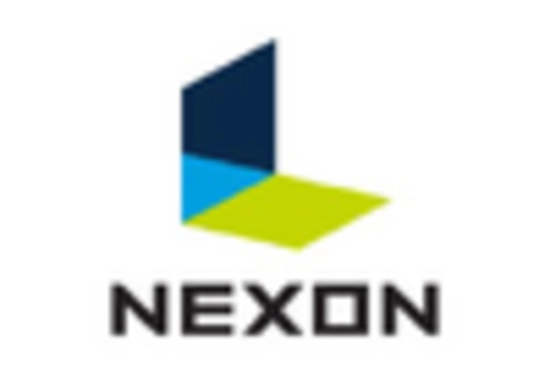The Online Gaming Market is currently characterized by a dynamic competitive landscape, driven by rapid technological advancements and evolving consumer preferences. Major players such as Tencent (CN), Sony (JP), and Microsoft (US) are at the forefront, each adopting distinct strategies to enhance their market positioning. Tencent (CN) continues to leverage its vast ecosystem, focusing on mobile gaming and social integration, while Sony (JP) emphasizes exclusive content and immersive experiences through its PlayStation platform. Microsoft (US), on the other hand, is heavily investing in cloud gaming and subscription services, aiming to create a seamless gaming experience across devices. Collectively, these strategies not only intensify competition but also foster innovation, pushing the boundaries of what online gaming can offer.
In terms of business tactics, companies are increasingly localizing their offerings to cater to diverse regional markets, optimizing supply chains to enhance efficiency. The competitive structure of the Online Gaming Market appears moderately fragmented, with a mix of established giants and emerging players. This fragmentation allows for a variety of gaming experiences, yet the influence of key players remains substantial, as they set trends and standards that smaller companies often follow.
In August 2025, Tencent (CN) announced a strategic partnership with a leading AI firm to enhance its gaming analytics capabilities. This move is likely to bolster Tencent's ability to personalize gaming experiences, thereby increasing user engagement and retention. By integrating advanced AI technologies, Tencent aims to refine its game development processes and optimize in-game monetization strategies, which could provide a competitive edge in a crowded market.
In September 2025, Microsoft (US) unveiled its latest cloud gaming service, which allows users to access a library of games without the need for high-end hardware. This initiative not only democratizes access to gaming but also positions Microsoft as a leader in the cloud gaming space. The strategic importance of this launch lies in its potential to attract a broader audience, particularly those who may not have previously engaged with console gaming, thus expanding Microsoft's market share.
In October 2025, Sony (JP) revealed plans to expand its PlayStation Network into emerging markets, focusing on localized content and pricing strategies. This expansion is indicative of Sony's commitment to capturing new demographics and enhancing its global footprint. By tailoring its offerings to meet the specific needs of these markets, Sony is likely to strengthen its competitive position and drive growth in regions that have been historically underrepresented in the gaming sector.
As of October 2025, the Online Gaming Market is witnessing trends such as increased digitalization, the integration of AI, and a growing emphasis on sustainability. Strategic alliances among companies are becoming more prevalent, as they seek to combine resources and expertise to navigate the complexities of the market. Looking ahead, competitive differentiation is expected to evolve, shifting from traditional price-based competition to a focus on innovation, technological advancements, and supply chain reliability. This transition underscores the necessity for companies to adapt and innovate continuously to maintain their competitive edge in an ever-evolving landscape.


















Leave a Comment